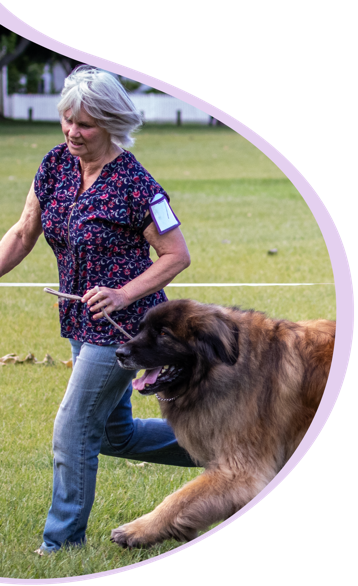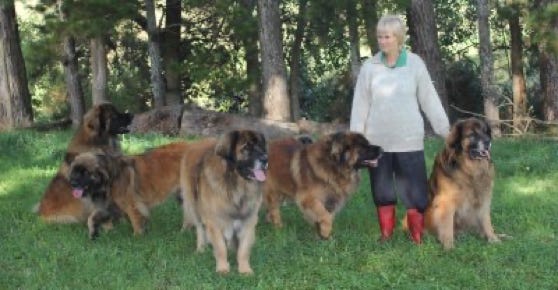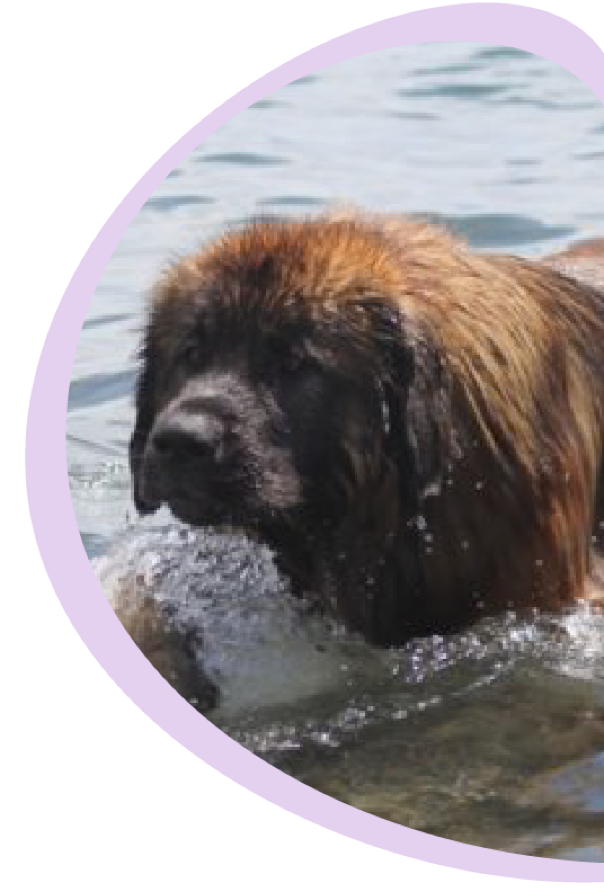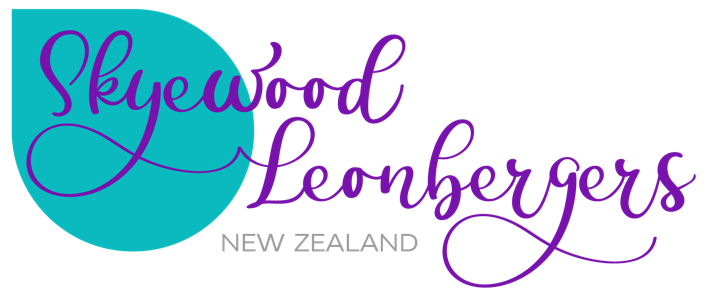
Leonbergers
History
The breed’s name derives from the city of Leonberg in south-west Germany. According to legend, the Leonberger was ostensibly bred as a ‘symbolic dog’ that would mimic the lion in the town crest. Heinrich Essig, a dog breeder and seller from Leonberg originally bred the Leonberger from the Newfoundland (the Landseer type, with black/white marks), Saint Bernard, and Great Pyrenees Mountain Dog in the early 1800s, although it has been an established race in Germany only from 1846. The colouring of today’s Leonbergers, reddish brown with a black mask, was developed during the 19th century, probably by introducing other breeds.
The Leonberger was initially used to protect livestock and pull loads in West Germany and other European countries. Leonbergers were seriously affected by the privations of the two world wars. During World War I most Leonbergers were left to fend for themselves as breeders fled or were killed. Only five Leonbergers survived World War I and were bred until World War II when, again, almost all Leonbergers were lost. Leonbergers today trace their ancestry back to eight dogs that survived World War II.
Appearance
The Leonberger is a very large, strong dog, substantial yet elegant. In appearance, he is rather squarely built and comes in shades of gold, and various hues of red and brown. Many have dark tipping. His distinguishing feature is his black mask, and dark, kind eyes. He should have close fitting flews and should not drool. Mature male Leonbergers are markedly masculine and carry a lionesque mane and long fully feathered tail. Females may appear less extreme in coat and are notably feminine when compared to a dog.
Temperament
The Leonberger is distinguished by unflappability and friendliness. ‘Laid back’ yet sensitive, Leonbergers become attached to their pack — human or animal — very quickly and very deeply. With the Newfoundland, Great Pyreness and Saint Bernard as foundation stock it is not surprising that they excel in cart work and water work. For a big dog, the Leonberger is very agile and athletic for his size. He is is called a gentle giant but in truth this is the characteristic of a mature dog of two years or more, younger dogs can be wilful and rambunctious. The defining characteristics of a Leonberger are kindness, steadiness, self assurance and an easy going joie de vivre.
Care
A Leonberger is a family dog, the desire to be with his pack is far more important than a large yard. He can adapt to modest living quarters if he is given time with his people, a daily walk and regular training time. Leonbergers are good with children and other dogs. Socialization and thorough obedience training are extremely important with any giant breed, including Leonbergers. Although he is generally welcoming of friends and family, he is watchful, and may use his size to intimidate but never his teeth to protect his loved ones. Generally a very kind animal, it’s not well suited to be a guard dog, despite his size. Because he has a thick double coat, the Leonberger needs ongoing grooming. This can be a daily job when he is moulting.
Health
Leonbergers are strong, generally healthy dogs, and providing they have the right diet they may be more resistant to hip dysplasia. Breeders are now screening their dogs to reduce the risk of bone/joint problems. Their lifespan is between 8 to 10 years, which is in line with other similarly sized breeds. Some cancers, Addison’s disease, and cardio-myopathy are some of the diseases that may affect Leonbergers. Bloat is another cause of death. Another problem which may affect the Leonberger, though not life threatening, is entropion.
Please visit www.leonbergerunion.com to find more information on this wonderful breed.


